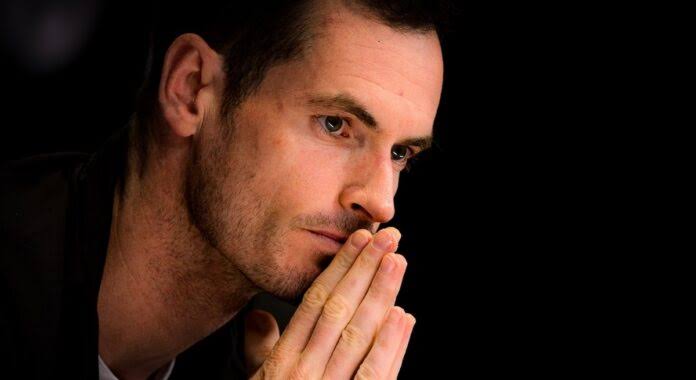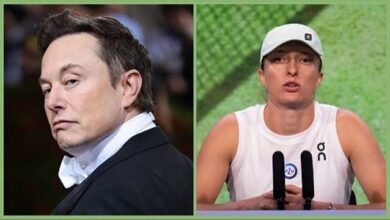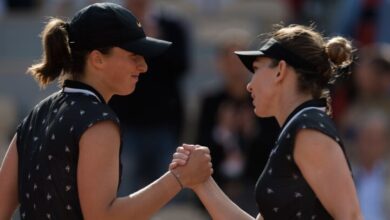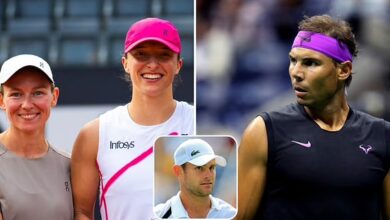Andy Murray’s skill, tenacity and integrity made him one of the tennis greats

Following his defeat with partner Dan Evans in the Olympic men’s doubles quarter-finals, Andy Murray has retired from professional tennis after nearly two decades on the circuit. This ends a storied career in which he won three grand slam singles titles (including two Wimbledon championships), reached world number one, won back-to-back Olympic gold medals in singles, and led Great Britain to Davis Cup victory.
From his resumé, it might seem that Murray enjoyed unbridled success, but the first phase of his career, between 2005 and 2012, was defined more by losses than victories. He lost his first four grand slam finals, and doubts grew – in his mind and in the public’s – about whether he would ever escape the role of “pretender”.
These doubts were assuaged with a stunning victory in the London 2012 Olympics, when he swept past Roger Federer in three straight sets. In beating Federer 6-2, 6-1, 6-4, he delivered a decisive gold medal performance. This win was a catalyst for his first grand slam title at the US Open the following month.
In the years that followed, Murray’s efforts meant that tennis’s “Big Three” (Federer, Rafael Nadal and Novak Djokovic) became the “Big Four”. His victory over Djokovic in the 2013 Wimbledon final is an iconic moment in British sport. In becoming the first British winner of the Wimbledon men’s singles title since Fred Perry in 1936, the Scot etched his name into tennis history and became a British sporting hero.
Sporting heroes take many forms. Even casual observers could appreciate Federer’s artistry or Serena Williams’ power. The most impressive parts of Murray’s game were less conspicuous. He did not possess a lightning serve or cannon of a forehand. Instead, he puzzled his way through matches, unpicking his opponent’s weaknesses and adapting as contests unfolded. His greatest assets were his tactical nous, competitive spirit, and supreme fitness.
These first two qualities remain undimmed, but injury derailed his career at its height. In 2017, he began to experience acute pain in his hip. As he put it: “I was the number one tennis player in the world, but I couldn’t walk.”
This injury eventually required two surgeries, endless rehab, and Murray returned to competition with a metal hip.
By this time, his legacy was secure, he was in his late 20s, and he had a young family – he had every reason to walk away. But Murray endured. He lost early in the big events, he fell from no.1 in the world to being a top 50 player, and he played lower-tier “challenger” events to maintain a respectable ranking. While the glamorous highs of grand slam finals were not part of this closing chapter, Murray’s persistence, in spite of his diminished physical abilities, proved that sometimes competing is enough.
This final phase of his career was not without highlights. His second-round win at the 2023 Australian Open against Thanasi Kokkinakis was a standout moment. Lasting five hours and 45 minutes, it was the longest match of Murray’s career. Ending at 4.05am local time, it was the second-latest finish to a match in Australian Open history. In a battle of wills, Murray proved that he remained peerless.
But his legacy extends beyond his trophy cabinet. Tim Henman, Murray’s predecessor as British no.1, restored faith that British players could compete consistently at the latter stages of grand slams. Murray went a step further and became a multiple grand slam champion. He normalised the idea of British grand slam success, and demonstrated to aspiring British players the level of professionalism required to achieve it.
An ally to women’s tennis
While Murray was not an athlete activist who intervened in national political debate, he grasped the politics of his sport, and his advocacy has moved the needle in tennis towards fairness and equality. He was a vocal critic of doping and he has argued for athlete welfare measures. But perhaps his most important contribution has been as an ally to women’s tennis.
In a variety of ways, he has insisted on parity of esteem between the sexes. He has corrected interviewers for overlooking the achievements of women in their questions to him, and he has argued for equal prize money at combined men’s and women’s events.



